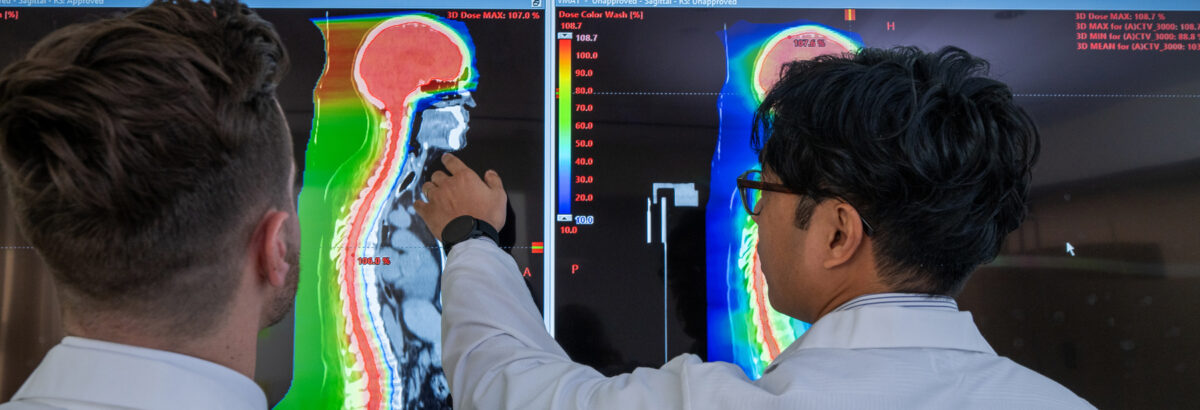Prostate Cancer FAQs
Frequently Asked Questions
These answers to frequently asked questions can help you decide whether proton therapy for prostate cancer is right for you.
What are the benefits of proton therapy for prostate cancer?
Radiation therapy is a common treatment for prostate cancer. However, the side effects of traditional (photon) radiation treatment can have quality of life implications, including urinary, bowel and erectile dysfunction. Studies have shown that proton therapy can reduce the likelihood of these side effects. Proton therapy radiation:
– Reduces the amount of radiation to organs near the prostate by 80%, minimizing the amount of radiation to the bladder, bowels and surrounding healthy tissue.
– Is highly effective in treating prostate cancer that has returned after previous radiation therapy or prostatectomy.
– Is beneficial for men with high-risk prostate cancer that has spread to, or is at risk of spreading to, the lymph nodes. Compared to conventional treatment, proton therapy can more safely deliver high radiation doses to the lymph nodes while better sparing the healthy bowel and bladder.
– Reduces the risk of secondary cancers in the treated areas.
What types of prostate cancer can be treated with proton therapy?
Proton therapy can treat most forms of prostate cancer including:
– Stage 1, 2 or 3 (low, intermediate, and high risk) prostate cancer
– Lymph node-positive prostate cancer
– Recurrent prostate cancer (after prior surgery or radiation)
– Metastatic prostate cancer with limited metastases
– Proton therapy may be recommended following prostatectomy surgery depending on factors such as Gleason score, seminal vesicle and lymph node involvement, or PSA level.
Are there studies that support the benefits of proton therapy for prostate cancer?
Numerous studies have shown the effectiveness of proton therapy for prostate cancer to consistently be as good or better than traditional (photon) radiation therapy. These studies also indicate reduced toxicities to nearby healthy organs and tissues. For example, in one study of over 1,400 men with prostate cancer, men who received IMRT (traditional radiation) reported more moderate or major problems with rectal urgency and frequent bowel movements compared with those who received proton therapy (Hoppe BS, et. al. Cancer. 2014;120(7):1076-82.).
Are there side effects?
Side effects of proton therapy depend on the part of the body receiving treatment, the tumor size and the types of healthy tissues near the tumor. For prostate cancer treatment, they may include temporary skin discoloration where the proton beam enters your body and mild urinary urgency and frequency that can be treated with medication, if needed. In the vast majority of cases, these symptoms are quite mild and subside shortly after proton treatment.
How many treatments are required for prostate cancer? How long does each treatment take?
Most men receive proton therapy five days per week for about five weeks. Each treatment, called a fraction, takes 5 to 10 minutes plus the time our team needs to position you for treatment. In appropriate candidates, we also offer a 5-fraction (SBRT) treatment.
Does the New York Proton Center offer clinical trials for prostate cancer?
We are pleased to offer a growing number of clinical trials for a variety of cancers. We are currently enrolling patients in these prostate cancer studies:
– NYPC 2020-027 Phase II Study of Pencil Beam Scanning Proton Stereotactic Body Radiation Therapy for Prostate Cancer: NCT04842890
What will my life be like during proton therapy treatment for prostate cancer?
Most of our patients continue to carry out their regular activities, including work, exercise, hobbies, and other daily tasks during the weeks they are receiving proton therapy treatment. And the treatment itself is non-invasive and painless. You will not see or feel the radiation, and you will never emit radiation from your body.
Proton Therapy for Prostate Cancer
For more information about proton therapy for prostate
cancer, download our PDF.



